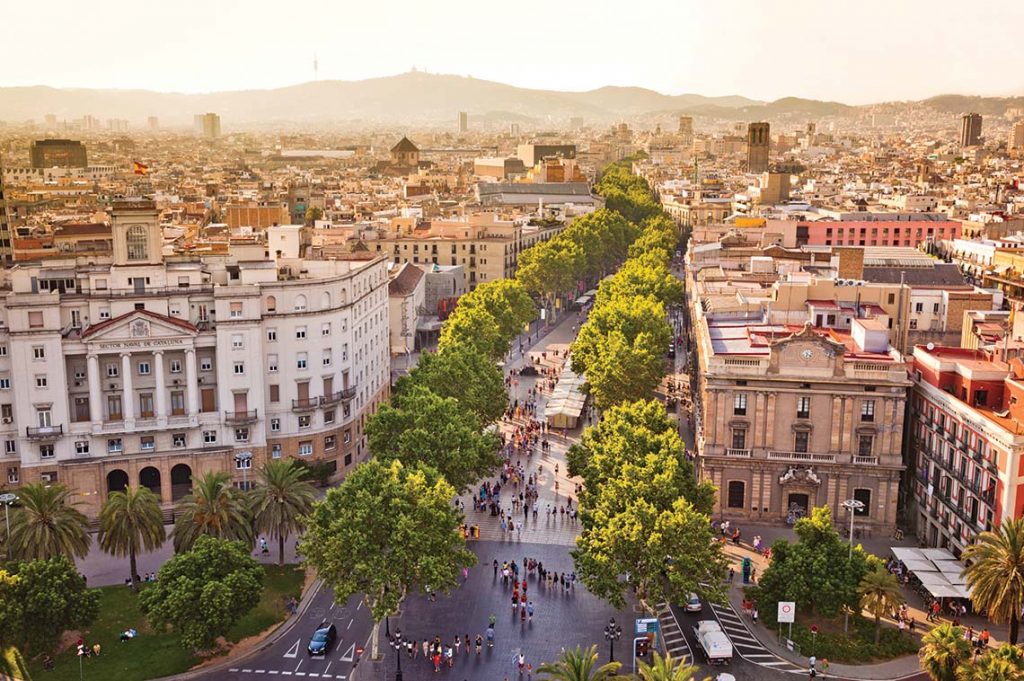If any further proof were needed that we live in a post-satire society, then look no further than the current international furore over the 15-minute city concept. The utopians and dystopians are both deeply invested, with the war of ideas playing out in media. One side sees 15-minute cities as a sustainability utopia, the other as outrageous authoritarianism and social control.
The basic concept is simple: urban areas are (re)planned to ensure most daily necessities can be accomplished by either walking or cycling within a 15-minute radius. It’s about organising urban neighbourhoods, not entire cities, into semi-independent villages. The concept has been described by some as a return to a local way of life, harking back to a time to the classic neighbourhoods of Paris or London, or the mid-century New York captured in the work of Jane Jacobs. For others, it’s the beginning of de-facto outdoors prisons, where residents are spatially restricted from exercising their rights to social, economic and travel opportunities.
The last few years have seen a rapid cultural diffusion of the idea, with many cities experimenting to various degrees with concept. For example, Singapore’s Land Transport Authority recently released a new master plan that included the goal of ‘20-minute towns’ set within a ‘45-minute city’. Shanghai emphasises the ‘15-minute community life circle’, aimed at allowing residents to complete all their daily activities within 15 minutes on foot. Various cities in the UK, including Oxford, are currently experimenting with the idea. Paris was an early adopter.
“The basic concept is simple: urban areas are (re)planned to ensure most daily necessities can be accomplished by either walking or cycling within a 15-minute radius. It’s about organising urban neighbourhoods, not entire cities, into semi-independent villages.”

Working from home a game changer
The work from home shift brought about by the Covid-19 pandemic led to a drastic change in the way people feel about the necessity to be in the office every day, or even at all. Of course, thinking has changed quickly and often on this topic in very recent times. It now seems that working from home occasionally will be utilised by many employees to reduce commuting a few times a week. Working from home has become a lifestyle choice for many. However, these people do not necessarily need or want to be bound to their neighbourhoods for everything.
Still, the seemingly permanent shift to more working from home in many cities has enhanced the 15-minute city concept in the minds of some planners and policymakers. The big demand for re-thinking local neighbourhood planning has faded a bit from the intense imaginations of 2020/21. Nonetheless the general understanding of the value of good neighbourhoods is more heightened in the public mind now. Seizing the moment, many policymakers and planners have leveraged the 15-minute city concept as a neat solution.
The main dilemma of the 15-minute city concept is something that has long challenged urban planning: translating a compelling theoretical idea into a successful, universally accessible, and desirable spatial reality. Creating functional urban spaces is surprisingly tricky, not least because the realities of human behaviours, perceptions and desires are often at odds with the ideological expectations of planners. What looks good in two dimensions may be a disaster in three.
For a clear example of this, consider the Modernist movement. Inspired by the utopian promises of the architect, Le Corbusier, high-rise social housing towers sprung up across European cities from the mid-twentieth century onwards. The trend spread further than that and can be seen in Australian cities also.
Old wine, new bottle
Promised as thriving neighbourhoods in the sky, most of these developments in European cities were poorly designed, built an integrated with their surrounding cities. Social infrastructure was usually non-existent or very basic. Many soon fell into social dysfunction, disconnection, and despair. Housing the needy using Modernist planning and design principles looked utopian on paper but turned out to be the exact opposite in practice. Despite the clear lessons, many of these developments limp on in increasingly poor repair, perpetuating cycles of social and spatial deprivation.
Looking coldly at the 15-minute cities concept through my professional eyes as an Urban Planner, I would say it’s something of a fad; unwarranted, unworkable, and unnecessary. There’s a smell of old wine from a new bottle.
Cities all over the world have already spent decades, and had variable success, in their efforts to deliver vibrant urban neighbourhoods before now. Urban consolidation, new urbanism, transit-orientated developments are just some of the similar concepts that have gone before. Realising the current 15-minute city vision successfully in spatial realities will require massive behaviour change and public buy-in. None of this is guaranteed, no matter how convinced some planners and policymakers might already be.
Slashing car use and relying on reasonable walking and cycling distances to reach all the services we need is a massive logistical and financial undertaking for governments and councils. It’s probably not even feasible, at least not at scale. Duplication of services would be required at levels far beyond current provision. Market efficiencies would be disrupted, perhaps lost, ensuring that many private service providers won’t go along with it.

The right setting is crucial
I have yet to read an article proclaiming the benefits of 15-minute cities that deeply considers the impacts on children, people with disabilities, pregnant women, seniors, or any other cohort with limited or reduced mobilities. I find similar silence in the literature when it comes to accounting for the carriage of goods and people’s belongings. Likewise, any evidence of real consideration of how outdoor climates and exposures might be properly accounted for. It’s easy to design space for young, healthy, and childfree adults, but it’s much more difficult and expensive to design for universal access and inclusion, which are increasingly becoming foundational urban design standards, not add-ons.
A final point – this one raised often by the dystopians – is the concern city authorities will confine residents to their 15-minute neighbourhood, using surveillance technology to minimise the number of times they can leave, and fining them for breaches. Obviously, restricting movement in such a way would be a gross violation of human rights and extends way beyond the brief of a city council. For a 15-minute city project to have hope of success, its primary goal must be to realise the promise, so people genuinely won’t need to leave often. Compliance can only ever be voluntary. Councils should pay close attention to communicating this promise at every opportunity if they are to secure wide public support.
In my view, the success of any 15-minute city project will depend on it happening in right setting, based on extensive consultation with all residents, stakeholders, and user groups, and ultimately backed by clear and transparent governance. It’s a tall order.
My overarching view on 15-minute cities in one sentence: Planning history is filled with two dimensional dreams materialising into three dimensional nightmares, and based on the evidence, I see low potential for 15-minute cities to be any different.
Author
 Dr Tony Matthews is an award-winning Urban and Environmental Planner, with portfolios in academia, practice and the media. He is a faculty member at Griffith University, where he is a Senior Lecturer in the School of Environment & Science and the Cities Research Institute.
Dr Tony Matthews is an award-winning Urban and Environmental Planner, with portfolios in academia, practice and the media. He is a faculty member at Griffith University, where he is a Senior Lecturer in the School of Environment & Science and the Cities Research Institute.
In addition to a Masters and PhD in Planning, Tony holds the professional designation of Chartered Town Planner, earned through the Royal Town Planning Institute. While primarily based in planning academia and research, Tony maintains an active practice portfolio. He has led and participated in a wide variety of planning and sustainability projects in collaboration with government, the private sector and community organisations. Tony is also an in-demand public speaker and regularly delivers invited keynotes and speeches at academic and industry events.
Follow Tony on Twitter
Share
Share
Share
